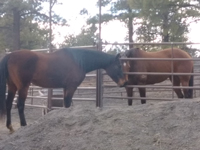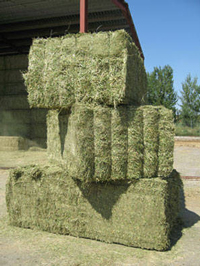October 2021
Holistic Horsekeeping
How to have a healthy happy horse.
Volume 26, Number 10
=*=*=*=*=*=*=*=*=*=*=*=*=*=*=*=*
In This Issue:
1. Pain explained with Traditional Chinese Medicine – Painful Bi
2. Do you know your hay?
=*=*=*=*=*=*=*=*=*=*=*=*=*=*=*=
1. Pain explained with Traditional Chinese Medicine – Painful Bi

Ever wonder why the miracle product that works on so many horses does not do a thing for your horse? Or why the wonder cure you found and shared with all your friends did not help their horses one little bit. The reason is not all pain is the same. Western Medicine tends to lump all pain symptoms together and treat them the same. Traditional Chinese Medicine(TCM) divides types of pain into 5 types and treats each type quite differently.
According to TCM, except for acute injury, all pain is the result of an underlying weakness in the immune system. A healthy body should have an abundance of defensive Qi(Wei Qi) circulating through the meridians to protect against external pathogens such as Wind, Cold and Damp. Qi represents the life force of the body and meridians are the pathways through which this energy flows. TCM looks at pathogens like Wind, Cold, Heat, and Damp where Western Medicine looks at viruses, bacteria and parasites. Anyone who has experienced the achy joints and muscles with a the flu, a sinus headache or lymes disease understands how viruses, bacteria and parasites can cause pain.
Pain in TCM is referred to a Bi Syndrome. Bi means obstruction in the meridians caused by the invasion of Wind, Cold and Damp. Bi syndrome may show as pain, soreness, numbness, or swelling of the joints, bones, muscles, and connective tissues. Western Medicine would label these conditions as rheumatism, arthritis, osteoarthritis, bursitis, fibromyalgia, sciatica, etc.
The 5 types of pain according to TCM are Wandering Bi(Wind), Painful Bi(Cold), Fixed Bi(Damp), Febrile Bi(Heat) and Bony Bi(long standing Damp).
Wandering Bi was covered last month.
Painful Bi acts like cold with contraction and congealing. The pain is severe and stabbing in nature. It can be in the muscles or joints with limited movement and coldness of the tissues. Bursitis and early stage arthritis would fit the Western Medicine model. This is the horse that starts out very lame and then moves better as he warms up. Flexion tests and joint blocks may identify the area of pain but little will show up on radiographs or ultrasound.
Painful Bi – The horse that starts out lame but warms out of it
Treatment and prevention of Painful Bi include providing shelter from the cold or blanketing if needed. Nutritional support would include glucosamine based joint supplements such as JointPlus, Joint and Recovery, and MSM have a slightly warming effect on the tissues.
Liniments such as Formula 11 will warm an area by increasing circulation. Hot compresses and rubbing will relieve pain. Regular exercise is important to keep circulation going so blood does not become congealed or stagnated in one area.
Arnica, Ruta and Rhus tox are good homeopathic remedies to consider for Painful Bi syndrome. Acupressure points to consider include ST 36, LI 11, CV 6 and GV 4. The herb, moxa, can be burned over the accupressure point to provide additional warming effect.
Treatment and Prevention of Painful Bi
Providing shelter from the cold and blanketing as needed
JointPlus – contains nitric oxide to increase circulation, anti inflammatory and antioxidant herbs and nutrients
Joint and Recovery – Contains King Trumpet mushrooms which has high levels of L-ergothionrine to decrease inflammation, Antrodia mushroom for liver and kidney support and mild liver detoxification, Lion’s Mane mushroom for nerve healing, Reishi mushroom as an analgesic, cordyceps for cellular energy colostrum and probiotics for gut support and healing.
MSM
Hot compresses and rubbing
Regular exercise
Arnica, ruta and rhus tox
ST 36, LI 11, CV 6 and GV 4 – with Moxa
2. Do you know your hay?

Hay makes up the largest percentage of the diet for most horses. Bagged feeds should be a small part of the horse’s diet and yet bagged feeds have detailed nutritional analysis but hay comes with no information at all. Unfortunately, it falls on the horse owner to have the hay analyzed. There are obvious challenges with this plan.
How frustrating it is to buy a large load of hay only to find out it is not appropriate for your horse. I had this happen this summer when drought caused higher than normal sugar levels in the local hay. Our Insulin Resistant horse can’t eat this high sugar hay. Having already loaded 150 bales into my loft, I was faced with soaking this hay to remove some of the sugar. Not an easy task with heavy snow and many nights of temperatures below 0.
Many large horse operations buy hay very frequently so testing is not an option as the hay is gone before results come in. Small horse operations may not have room to store large loads of hay so they face the same challenges as larger farms as the hay load is gone before test results come in.
Unfortunately, you can’t tell much about the nutritional value of hay by looking at it. In all my years of looking at hay and hay analysis I am amazed at how bad the analysis can be for beautiful looking hay. On the other hand, less appealing looking hay can be perfect in its nutritional value.
If you feed a lower nutrition hay, such as coastal bermuda, and your horse is not metabolic, you may be able to fill in for deficiencies by feeding a whole food supplement, such as blue green algae. Algae has a wide range of nutrients and it does an amazing job of filling in for what is not in your hay. Dull hair coats, runny eyes and poor quality hooves can all be indicators that your hay is not meeting your horse’s nutritional needs. Formulated vitamin/mineral supplements don’t give the same results as blue green algae.
On the other hand, if your horse is getting too fat or overly energetic, your hay may be too nutritious for your horse’s needs. In this case, soaking may remove enough sugar to make the hay acceptable. You can remove about 30 percent of the sugar by soaking for 30 minutes in warm weather and 1 hour when it is cold. Make sure you drain the soak water so your horse can’t drink it.
If you have a metabolic horse you will want to rinse your hay before you soak it. This will remove surface iron from the hay. High iron contamination from the soil can aggravate insulin resistant horses by interfering with assimilation of copper and zinc. Non metabolic horses can more easily deal with high iron hay.
Soaking hay will not remove minerals from the hay itself but you can lose some electrolytes. I like to keep Redcal minerals out free choice. You can get these at www.thenaturalvet.net. Horses lick these minerals as needed, especially when the weather is stressful.
If you can test your hay I love www.equi-analytical.com for testing. I use the Trainer test that gives you protein, sugar and starch, digestibility rate, plus macro and micronutrients. If you have a metabolic horse you need all of this information to determine if the hay can be fed safely.
Once you have an analysis of your hay you can work with a company like FeedXL to help you balance your horse’s diet.
Knowing what is in your bagged feed and supplements is of little value if you don’t know what is in your hay. While you can do some actions to work around non tested hay, it is not the same as having the analysis. As horse owners we need to start asking our growers to provide us with tested hay and let them know we are willing to pay extra for them providing this service. It makes so much more sense to have the testing done before the hay is purchased.
++++ Copyright | Getting On and Off the List ++++
Unless otherwise attributed, all material is written and edited by Madalyn Ward, DVM. Copyright (c) 2021 HolisticHorsekeeping.com and Madalyn Ward, DVM. All rights reserved.
If you like the material in this newsletter please let your friends know about it. You may reprint material in other electronic or print publications provided the above copyright notice and a link to http://www.holistichorsekeeping.com is included in the credits.
You can get off this list by sending an email to info@holistichorsekeeping.com.
When you forward this material, please send the entire newsletter. Thanks!
Please also enjoy all of Dr. Ward’s web resources:
http://www.holistichorsekeeping.com
http://www.horsetemperament.com
http://blog.horseharmony.com
https://www.facebook.com/HolisticHorsekeeping
https://www.facebook.com/HorseHarmony
Twitter: madalynward